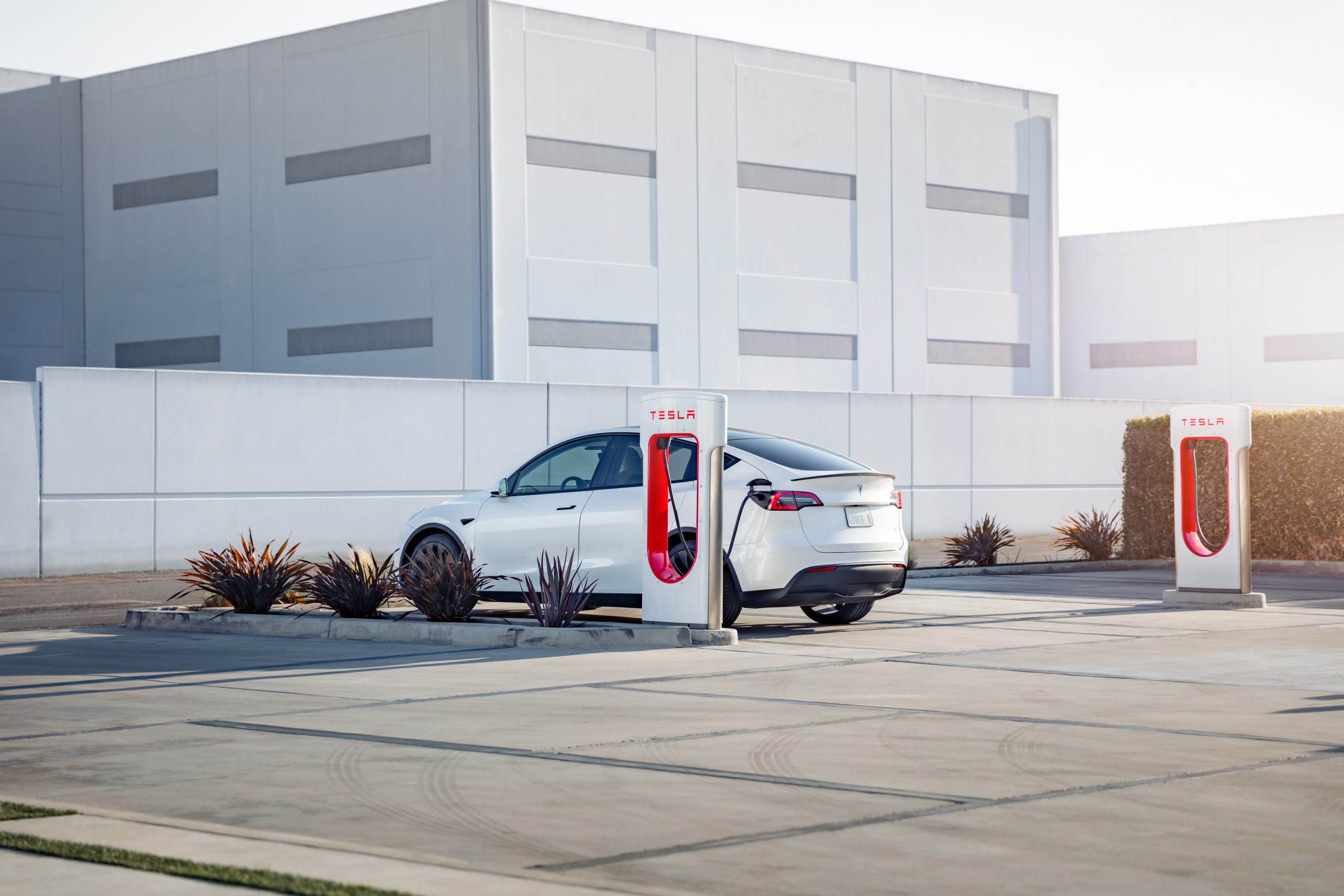
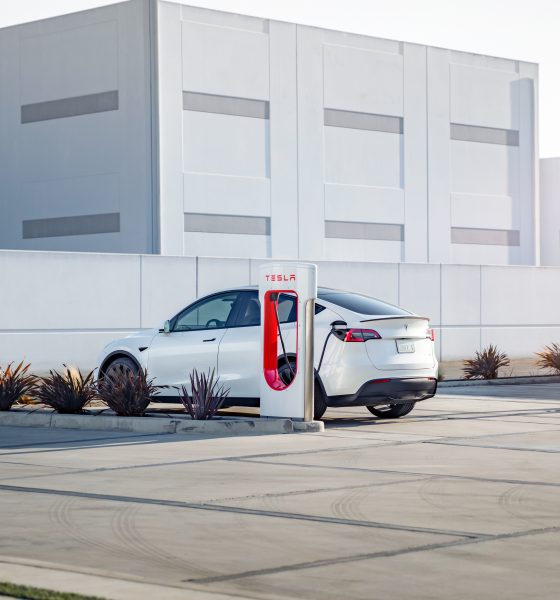
News
Opinion: Biden’s Tesla snub shows that clout, not innovation, is driving the American EV revolution
There was something missing during the Biden administration’s EV event at the White House on Thursday. While the event was promoted as a landmark meeting that signifies America’s commitment to embracing sustainable transportation, the world’s undisputed EV leader was noticeably absent. Eventually, one thing became quite clear — it is clout, not innovation, that is still driving the mainstream American EV revolution.
The Biden administration’s goals seemed good on paper, with the president announcing a national target of electric cars making up half of all new vehicle sales by 2030. Executives from the Detroit Big 3 were there, and for all intents and purposes, the event presented a venue for the administration and legacy automakers to somewhat pat themselves on the back for accepting sustainable transportation. This was despite the administration looking at hybrids, which are still equipped with a combustion engine, on the same playing field as zero-emissions vehicles like battery-electric cars.
Tesla’s absence in the White House EV event was noticeable. Elon Musk confirmed on Twitter that Tesla was not invited at all, and during the event, even netizens were quick to point out that an American automaker that practically forced the entire auto industry to shift to electric cars was strangely not invited to the White House. In a press briefing, White House press secretary Jenn Psaki was directly asked about Tesla’s absence, and her response was telling. “These are the three largest employers of the United Auto Workers (UAW), so I’ll let you draw your own conclusion,” she said.
The Elephant in the Room
Since its campaign days, the Biden administration has been clear that it supports electric vehicles. It was a good narrative, and it was the perfect foil to the Trump administration’s less-than-stellar commitment to zero-emissions transportation. Biden has always made it clear: he supports electric cars, especially those that are made by American labor. But over the past months, and amidst Biden’s appearances prior to the release of the Ford F-150 Lightning, one thing became clear: The administration is fond of EVs that are made in the United States — but only if they are produced through union work.
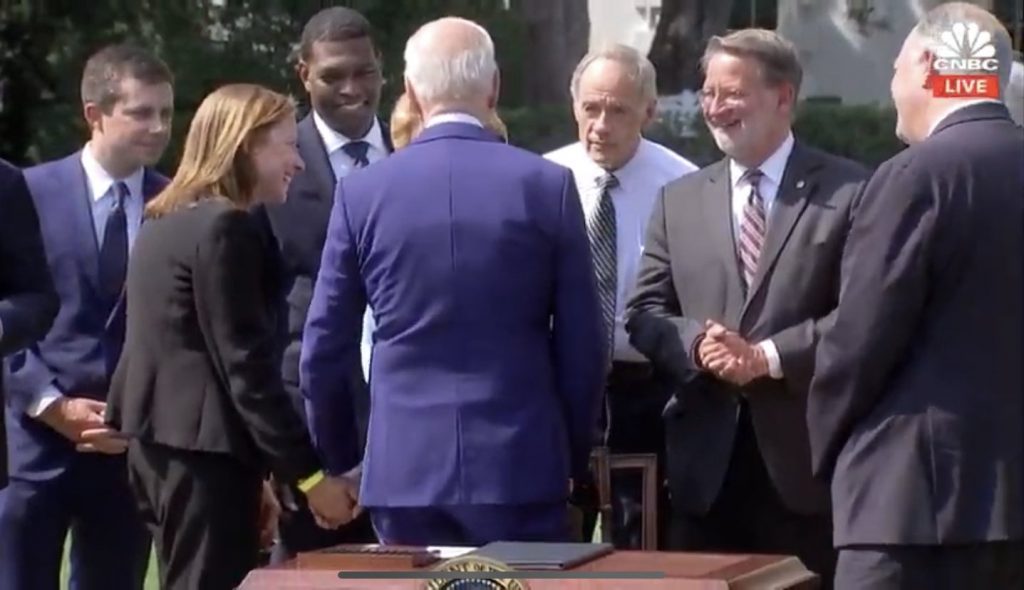
Electric cars that are made in America but not through union work like Teslas simply don’t get as much recognition — or any recognition at all. This was particularly evident in statements from Transportation Secretary Pete Buttigieg, who hobbled through his responses in a CNBC appearance in what appeared to be a conscious effort to avoid stating Tesla’s name. It was also very evident in the fact that the US President personally made it a point to mention union work numerous times during the White House EV event.
What is particularly interesting is that there is a reason why Tesla does not use union work in its Fremont Factory, unlike its Grohmann facility in Germany. It’s easy to run away with the narrative that Elon Musk is a tyrannical boss who intimidates employees to avoid them from joining the UAW, but the truth is more nuanced than that. It should be noted that the Fremont Factory, before it was bought by Tesla, was actually a plant powered by union work. And its closure, which effectively ended an ambitious project that was supposed to bring Japanese efficiency to American automaking, is something worth looking into.
A History Swept Under the Rug
The United Auto Workers’ mission is to fight for the rights of all workers, organize unions, and bargain and win fair wages and benefits of its members. But the Fremont Factory, even in its early days, was not exactly a picture-perfect example of how the UAW and an automaker could coexist together. Bruce Lee, a former running back from the University of Arkansas who was in charge of the GM Fremont Factory’s union before the facility became NUMMI, noted that tensions were typically high between unionized workers and management.
“It was considered the worst workforce in the automobile industry in the United States. And it was a reputation that was well-earned. Everything was a fight. They spent more time on grievances and on things like that than they did on producing cars. They had strikes all the time. It was just chaos constantly,” Lee said, adding that a 20% absenteeism was normal . This was echoed by noted author Jeffrey Liker, who interviewed workers at the GM Fremont plant’s early days. According to Liker, things were so bad at the plant that alcohol use, intercourse, and drug use were rampant among the employees. Defects in cars were typical too. Billy Hagerty, who used to put hoods and fenders on the plant, noted that quality of the cars from the GM Fremont plant was so bad that some Buick Regals had Buick Monte Carlo front ends, and vice versa.

The UAW was particularly powerful then, and this contributed to the GM Fremont factory’s workers practically running wild, with some workers intentionally putting coke bottles and loose bolts on door panels to spite the management and trigger customer complaints. GM eventually shut the plant down in 1982, laying off about 5,000 workers. The site was later transformed into New United Motor Manufacturing, Inc. (NUMMI) under a joint venture between Toyota and GM. But while the site hit the ground running thanks to Toyota’s highly efficient production techniques and its focus on teamwork, issues in the plant eventually arose. When General Motors filed for Chapter 11 bankruptcy in 2009, GM announced that it would pull out of the facility, which eventually resulted in NUMMI being shut down for good.
NUMMI’s shutdown was not received well by its unionized workers. During a meeting between NUMMI employees and UAW officials, things became so heated that an outraged older worker and union official ended up in a cussing match. A physical altercation almost happened. It was then no surprise that years later, and as CEO Elon Musk would note, the UAW would eventually fail to gain a foothold at the Tesla Fremont Factory. Tesla may not have hired the same workers from NUMMI, but some of those who work in the company today likely remember the history of the plant — and how it was let down by the UAW.
An Unrestrained Narrative — The UAW’s Favorable Streak
The Biden administration seems all too content to sweep this history under the rug. If his comments during the White House EV event were anything to go by, America’s electric vehicle shift is only lauded and recognized by the powers that be if unions are involved. This is almost ironic, considering that as recently as 2019, about 48,000 unionized GM workers held a strike because the company was looking to adopt electric vehicles. UAW Research Director Jennifer Kelly explained the workers’ reservations in a statement to CNBC then. “EV powertrains are simple compared to internal combustion engines. The simplicity could reduce the amount of labor, and thus jobs, associated with vehicle production,” Kelly said.
At this point, it seems high time to recognize that Tesla is an American success story that will not be celebrated, at least while the Biden administration is focused only on union-made electric vehicles. This means that Tesla would remain uninvited for landmark events such as this past Thursday’s EV meet at the White House, and it would likely remain a company that officials would refuse to acknowledge or name for its contributions to the country’s transition to electric cars.
This means that a narrative — even one that may not necessarily be accurate — could start settling in. A look at a statement from Ford Executive Chair Bill Ford following the White House event shows that such a thing is now happening. “I am proud that Ford is leading the electric revolution… Ford has always been a leader in sustainability,” he noted. Such a statement would likely be accepted as truth by many, or at least by those who are unfamiliar with the uphill climb that Tesla has gone through in its efforts to force the industry to embrace EVs.
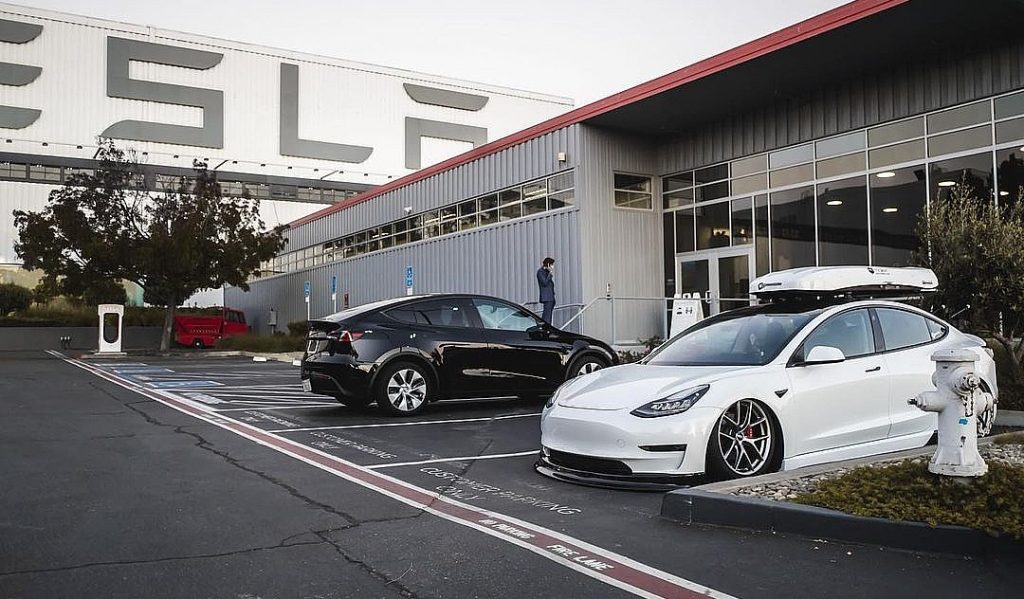
And amidst this, the UAW would likely be painted quite favorably. A company like Tesla, not so much. What is rather interesting is that a similar event has happened in the past. Back when the NUMMI was under threat of being shut down, the UAW opted to point the blame at Toyota. This was despite GM being the first company that pulled out of the facility. An article from the The New York Times was panned by actual NUMMI workers after it stated that Toyota’s decision to close up shop was the “foulest form of ingratitude.” Ironically, even unionized workers from NUMMI had issues with how Toyota was painted then, with some stating that GM and the UAW must take just as much blame for the facility’s failure.
A Tesla-shaped Punching Bag and an Underdog Story
What is rather interesting about the Biden administration’s focus on union-made EVs is the fact that organizations such as UAW have actually been steadily losing power. The UAW’s power may have been evident in the Fremont Factory’s pre-NUMMI days, but today, both its influence and its membership are quite far from their heights. UAW membership declined by nearly 10% in 2018 alone, with the organization losing over 35,000 members, and that was a year when 264,000 new manufacturing jobs were added to the US.
If there is something that the Biden administration has done with its recent Tesla snub, it is to highlight the company’s image as an underdog. And this, in a lot of ways, could backfire. The world loves underdogs, after all, and Tesla has always been one, from its days as a small electric sports car maker with grand plans to change the auto industry, until today, when it serves as a punching bag of sorts for critics of both the climate crisis and EVs as a whole. Matt Johnson Ph.D., an author and a professor at Hult International Business School in San Francisco, noted that people will always be drawn to underdogs because they tend to drive feelings of empathy and hope.
This is something that is very true of Tesla. Tesla may dwarf legacy auto today by market cap, but things like the Biden administration’s White House snub helps the company maintain its underdog status. This is arguably one of the reasons why Tesla and its CEO, Elon Musk, have such a strong following. The “cult” of Elon Musk and Twitter controversies and debates aside, it is difficult not to give a nod of respect to a company that pulled legacy automakers kicking and screaming towards an electric age. And the more Tesla is ignored or snubbed, the more influence the company may actually have.
“When we are led to believe that a company succeeded against external disadvantages (like an economic recession, for instance), we identify with the situation. The more we identify and internalize the gravity of the story, the more we root for it. There’s evidence indicating that brands with an underdog story can increase the intention to purchase and influence brand loyalty,” Johnson noted.
Don’t hesitate to contact us with news tips. Just send a message to tips@teslarati.com to give us a heads up.

Elon Musk
Starlink achieves major milestones in 2025 progress report
Starlink wrapped up 2025 with impressive growth, adding more than 4.6 million new active customers and expanding service to 35 additional countries, territories, and markets.

Starlink wrapped up 2025 with impressive growth, adding more than 4.6 million new active customers and expanding service to 35 additional countries, territories, and markets. The company also completed deployment of its first-generation Direct to Cell constellation, launching over 650 satellites in just 18 months to enable cellular connectivity.
SpaceX highlighted Starlink’s impressive 2025 progress in an extensive report.
Key achievements from Starlink’s 2025 Progress
Starlink connected over 4.6 million new customers with high-speed internet while bringing service to 35 more regions worldwide in 2025. Starlink is now connecting 9.2 million people worldwide. The service achieved this just weeks after hitting its 8 million customer milestone.
Starlink is now available in 155 markets, including areas that are unreachable by traditional ISPs. As per SpaceX, Starlink has also provided over 21 million airline passengers and 20 million cruise passengers with reliable high-speed internet connectivity during their travels.
Starlink Direct to Cell
Starlink’s Direct to Cell constellation, more than 650 satellites strong, has already connected over 12 million people at least once, marking a breakthrough in global mobile coverage.
Starlink Direct to Cell is currently rolled out to 22 countries and 6 continents, with over 6 million monthly customers. Starlink Direct to Cell also has 27 MNO partners to date.
“This year, SpaceX completed deployment of the first generation of the Starlink Direct to Cell constellation, with more than 650 satellites launched to low-Earth orbit in just 18 months. Starlink Direct to Cell has connected more than 12 million people, and counting, at least once, providing life-saving connectivity when people need it most,” SpaceX wrote.
News
Tesla Giga Nevada celebrates production of 6 millionth drive unit
To celebrate the milestone, the Giga Nevada team gathered for a celebratory group photo.
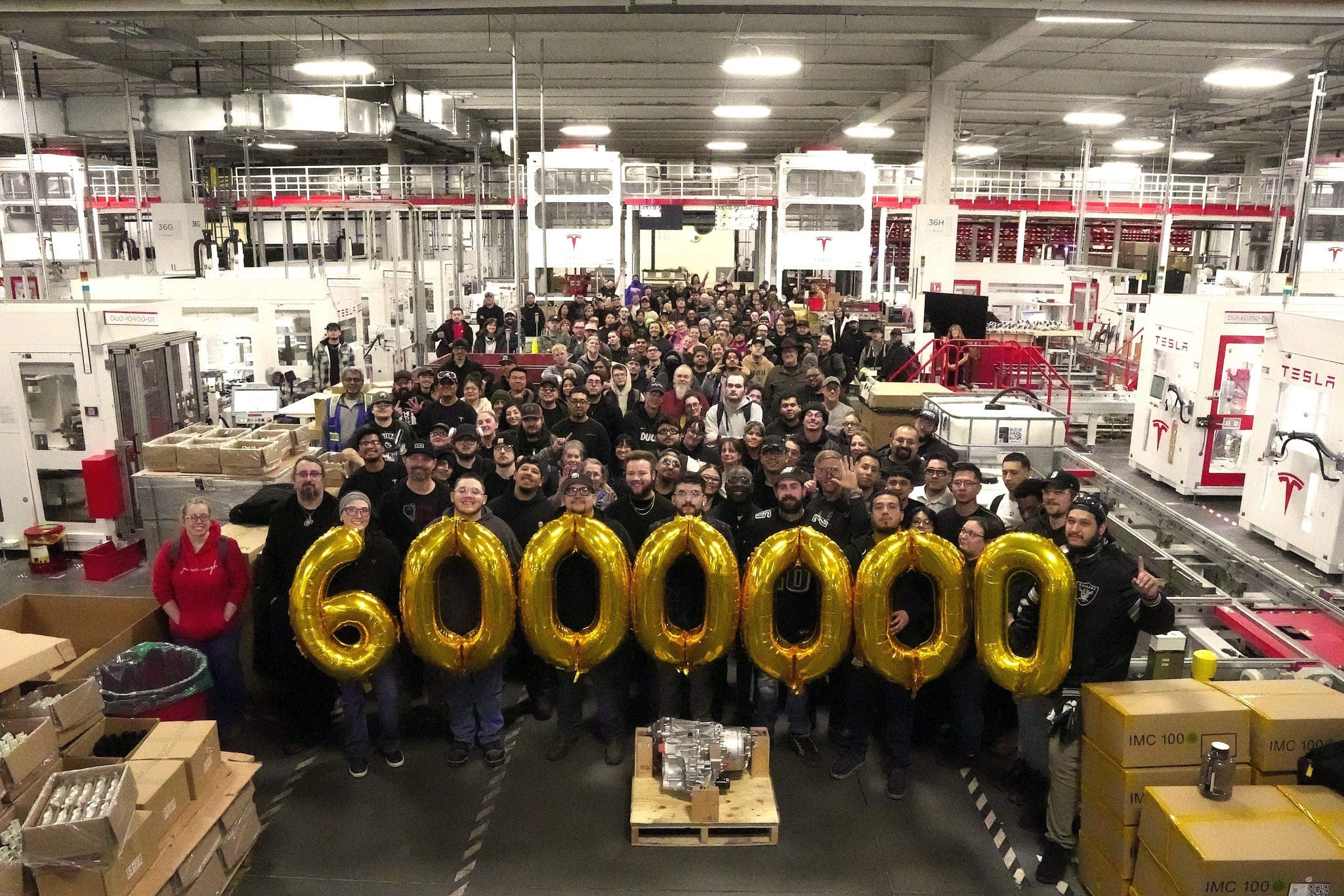
Tesla’s Giga Nevada has reached an impressive milestone, producing its 6 millionth drive unit as 2925 came to a close.
To celebrate the milestone, the Giga Nevada team gathered for a celebratory group photo.
6 million drive units
The achievement was shared by the official Tesla Manufacturing account on social media platform X. “Congratulations to the Giga Nevada team for producing their 6 millionth Drive Unit!” Tesla wrote.
The photo showed numerous factory workers assembled on the production floor, proudly holding golden balloons that spelled out “6000000″ in front of drive unit assembly stations. Elon Musk gave credit to the Giga Nevada team, writing, “Congrats on 6M drive units!” in a post on X.
Giga Nevada’s essential role
Giga Nevada produces drive units, battery packs, and energy products. The facility has been a cornerstone of Tesla’s scaling since opening, and it was the crucial facility that ultimately enabled Tesla to ramp the Model 3 and Model Y. Even today, it serves as Tesla’s core hub for battery and drivetrain components for vehicles that are produced in the United States.
Giga Nevada is expected to support Tesla’s ambitious 2026 targets, including the launch of vehicles like the Tesla Semi and the Cybercab. Tesla will have a very busy 2026, and based on Giga Nevada’s activities so far, it appears that the facility will be equally busy as well.
News
Tesla Supercharger network delivers record 6.7 TWh in 2025
The network now exceeds 75,000 stalls globally, and it supports even non-Tesla vehicles across several key markets.
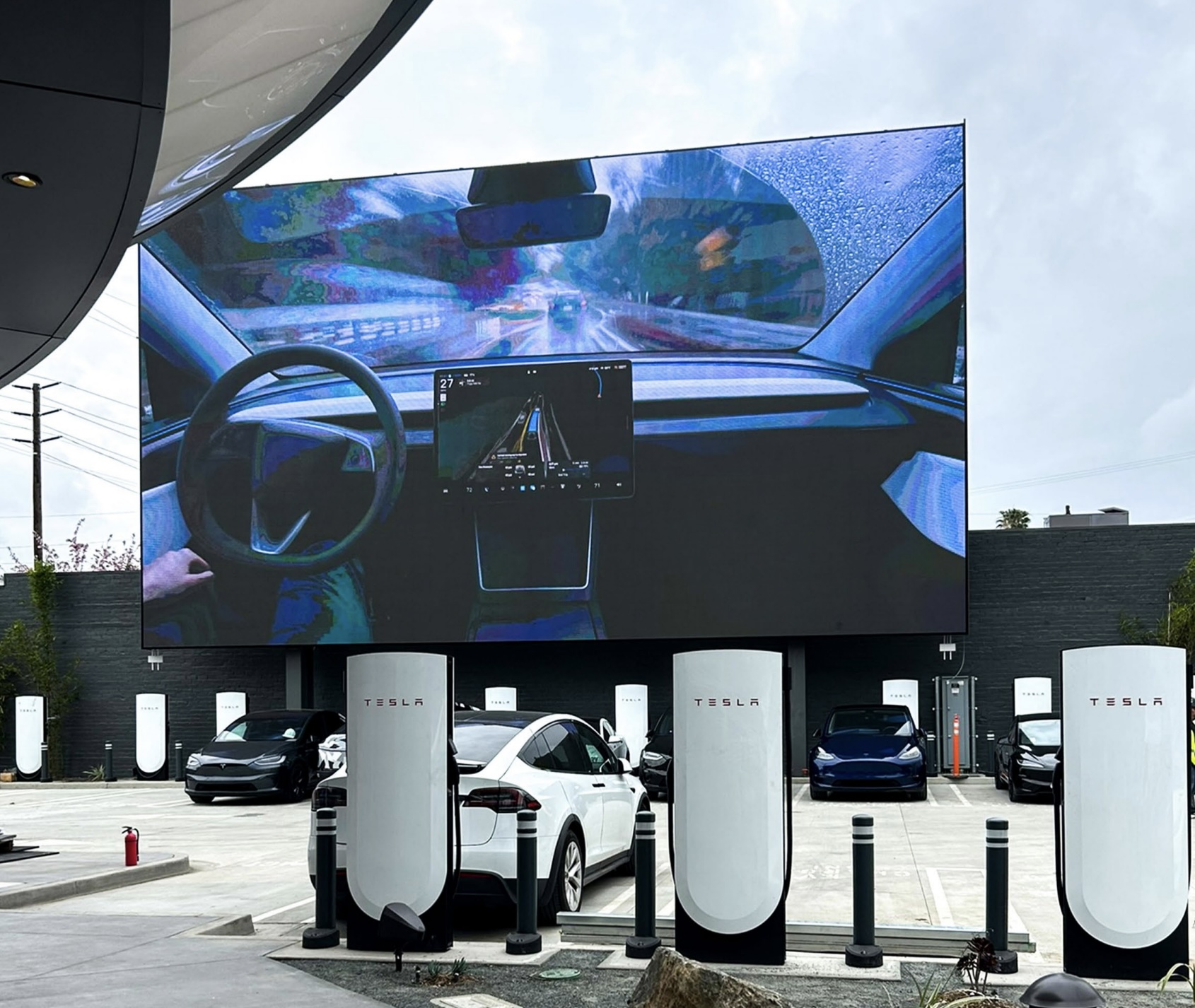
Tesla’s Supercharger Network had its biggest year ever in 2025, delivering a record 6.7 TWh of electricity to vehicles worldwide.
To celebrate its busy year, the official @TeslaCharging account shared an infographic showing the Supercharger Network’s growth from near-zero in 2012 to this year’s impressive milestone.
Record 6.7 TWh delivered in 2025
The bar chart shows steady Supercharger energy delivery increases since 2012. Based on the graphic, the Supercharger Network started small in the mid-2010s and accelerated sharply after 2019, when the Model 3 was going mainstream.
Each year from 2020 onward showed significantly more energy delivery, with 2025’s four quarters combining for the highest total yet at 6.7 TWh.
This energy powered millions of charging sessions across Tesla’s growing fleet of vehicles worldwide. The network now exceeds 75,000 stalls globally, and it supports even non-Tesla vehicles across several key markets. This makes the Supercharger Network loved not just by Tesla owners but EV drivers as a whole.
Resilience after Supercharger team changes
2025’s record energy delivery comes despite earlier 2024 layoffs on the Supercharger team, which sparked concerns about the system’s expansion pace. Max de Zegher, Tesla Director of Charging North America, also highlighted that “Outside China, Superchargers delivered more energy than all other fast chargers combined.”
Longtime Tesla owner and FSD tester Whole Mars Catalog noted the achievement as proof of continued momentum post-layoffs. At the time of the Supercharger team’s layoffs in 2024, numerous critics were claiming that Elon Musk was halting the network’s expansion altogether, and that the team only remained because the adults in the room convinced the juvenile CEO to relent.
Such a scenario, at least based on the graphic posted by the Tesla Charging team on X, seems highly implausible.








